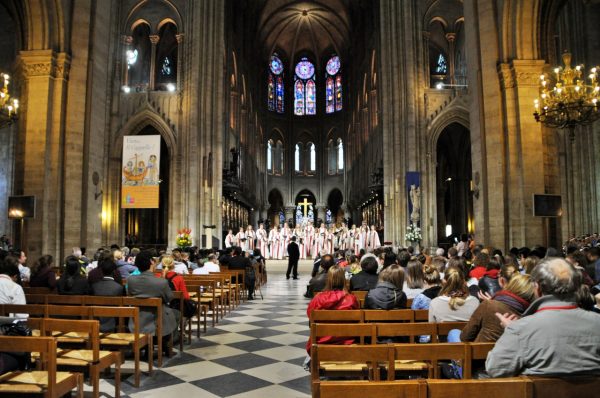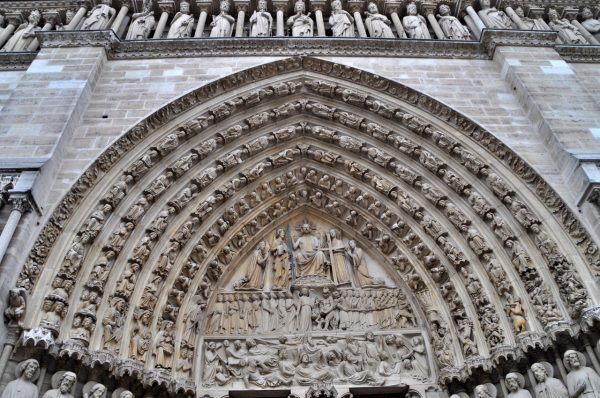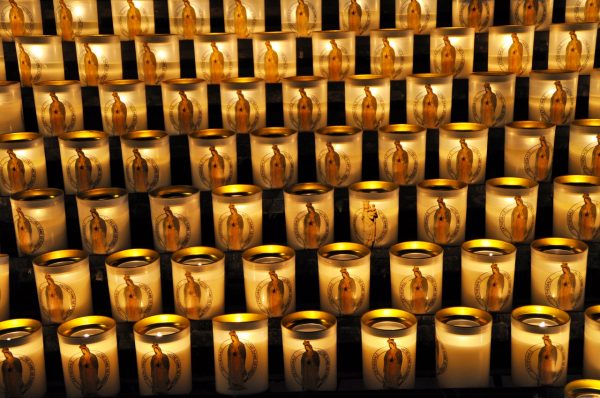The small quaint stores in the area where one walks past Sainte Chapelle and Palais de Justice to reach the Notre-Dame cathedral are forever busy selling intricate symbols of religious mythology. We found these figurines of everyone from apostles to demons and forever alert gargoyles and decided to walk fast as we had already spent hours at Centre Pompidou and were full of creative interpretations. Before that we had been walking through roads with names like St Nicolas des Champs and La Gaite Lyrique and the Gothic quarters of Paris and were somewhat exhausted with the long walks.

As we crossed over from a Rue to a Champ and then back we realized that almost everything here had art and style oozing from it. And I don’t just mean the stuff that is available in cafes, boulangeries, and patisseries. The entire city appeared to be inhaling and exhaling heritage. It was as if we were walking through avenues where every building had spires and domes, everything was large and majestic, and… yes, and you somehow always tended to cross one or the other bridge on the river that runs through Paris. Bridges or ponts (for instance, pont d’Arcole or pont au Change) having fabulous wrought iron artistry embedded and full of locks (Will talk about these love locks in some other post). Despite all this the Notre Dame cathedral or Cathedrale Notre-Dame de Paris strikes one as something out of the world… and this isn’t because of the ultra-long queues of visitors just outside the sculpture-dense gates but because you suddenly sight the original versions of some of those superbly carved figures sold in stores right there on the walls. The cathedral is on an island in the river and though around ten minutes of walk from Centre Pompidou, we had taken around an hour. Even Louvre isn’t far from here.
The NYTimes writes: “The cathedral was built on a small island called the Île de la Cité, in the middle of the Seine. Construction began in 1163, during the reign of King Louis VII, and was completed in 1345. It is considered a jewel of medieval Gothic architecture.
It was damaged and neglected in the 1790s, during the French Revolution. Victor Hugo’s 1831 novel, “Notre-Dame of Paris,” published in English as “The Hunchback of Notre Dame,” informed readers about the building’s decrepit condition.” Well, the Cathedral has seen destruction in its lifetime… but the damage in the fire in April 2019 is indeed heart-breaking.
Once inside the cathedral, one looks up and is astounded by the sheer height, the arches, the enthralling stained-glass windows. Until this time, Specky and I were convinced that there could be no examples of excellence in stained glass other than the ones we saw at York Minster. But the ones at Notre-Dame are hypnotizing and are in a literally unending array from one to the other end. Once inside, it isn’t easy to decide to move out especially when the choir is singing hymns. There were hundreds of visitors inside and yet not one jostle and even whispers tended to be apologetic and mild. It was as if all human impulses had decided to lie low until one stepped outside.

It was only when we came out that we could begin hearing voices. I must add here that if one is observant enough, one can get some excellent shots of candid moments. I managed to shoot pictures of a girl wither hands held high and her fingers holding pieces of a cookie… and sparrows realizing that this was only a child who meant them no harm, decided to hover at the precise point and take nibbles of those cookies. You can read this story here.
.
.
.











.
.
.
Arvind Passey
16 April 2019









2 comments
Vinay Nagaraju says:
Apr 17, 2019
Nice pictures Arvind, it was such a shame to hear about the fire. I was in Paris 2 years ago and could not make the Notredame visit. I told myself next time as I took a flight back, but I regret that now :(.. Such a shame that a giant piece of history is now heading to rubble,I can’t fathom how this could have happened in such a popular and well visited place
Arvind Passey says:
Apr 29, 2019
True. We shall know only what is revealed gradually.